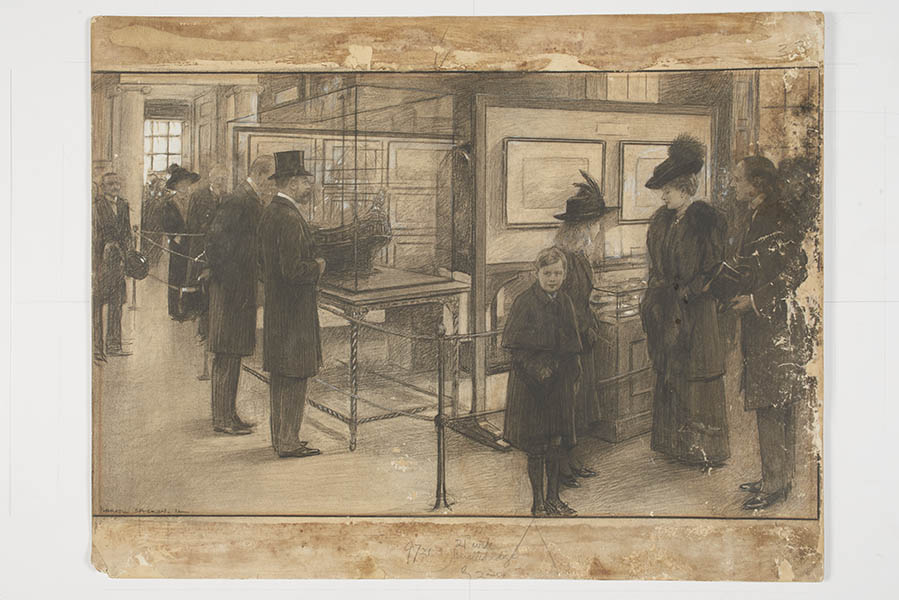Her Majesty Queen Elizabeth II opened the Museum of London on 2 December 1976. It was the first new museum building to open in London since the Second World War and attracted 370,000 visitors in its first six months.
The new institution was the marriage of two older museums, the London Museum and the Guildhall Museum. Both had lost their premises during the War: both were devoted to London and each complemented the other – the Guildhall’s strengths lay in archaeology, the London Museum’s in social history.
The London Museum had opened in 1912. It was a national museum intended to inspire feelings of civic pride about the nation’s capital. Thanks to inspired and idiosyncratic directors Guy Laking and Mortimer Wheeler, it went down a more populist path, collecting contemporary items, costume and social history at a time when such objects were not deemed worthy of a museum’s attention. The London Museum’s last exhibition in 1973 was ‘Mary Quant’s London’, a contemporary subject, typical of the institution.
The Corporation of London had established the Guildhall Museum in the 19th century. The museum’s main aim had been to preserve and study the antiquities excavated in a City where there is continual and intense building activity. Throughout the 20th century the Guildhall Museum’s archaeological activities developed along professional lines, and its remit extended to the archaeology of Greater London.
Joining together these two institutions, one of which belonging to the state and the other to the Corporation of London, required an Act of parliament. The Museum of London Act 1965 allowed the collection to be transferred to a board of governors made up of representatives of the corporation, national government and the Greater London Council.
The heart of the museum in 1976 was the permanent exhibition: 42,000 square feet (3,900 square metres) devoted to ‘a three-dimensional biography of London, beginning with the formation of the landscape on which it now stands and ending, in so far as it can ever end, with an impression of the most complex and dynamic urban organism in the world’. The permanent galleries were supplemented by temporary exhibitions. As with most London museums, visitor facilities grew in importance. The museum opened a restaurant in 1984 and extended it in 1993.
The museum welcomed its five millionth visitor, Lily Jones of Tooting, on 18 September 1984. Mrs Jones was presented with a 17th-century brick as a souvenir of her visit. By 2000, over 11 million people had passed through the doors.
From its beginning, the new museum saw itself as ‘not simply of or about London, ... also for London’. Its mission then and now is to play a part in the lives of all Londoners, ‘to inspire a passion for London’.








